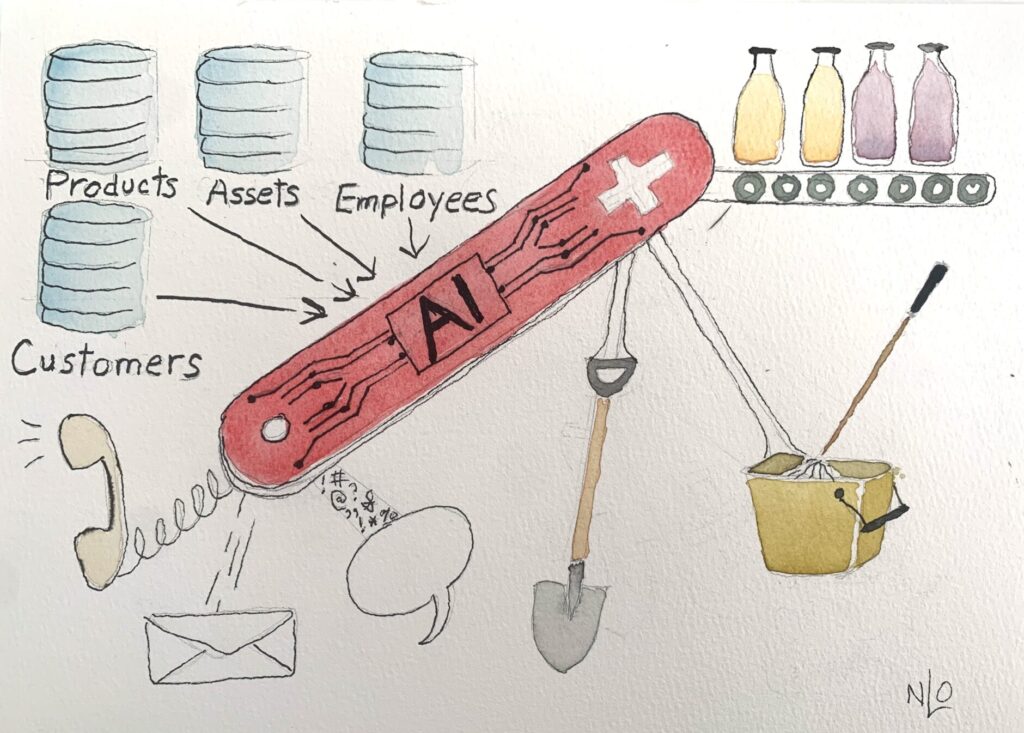Blog
Engineers, travel distance and burgers: estimating the carbon emissions reductions of a routing optimization project
Part 1 — Engineers (the project)
DecisionBrain worked out a solution for their client, a leading FSM company in the United Kingdom providing both planned and reactive maintenance to its customers, with the final aim of increasing productivity levels. The project was two-fold:
- Automating scheduling and planning of jobs
- Optimizing engineers’ travel distance
…and the solution developed relied on DecisionBrain Workforce Dynamic Scheduler .
As expected, several benefits resulted from it, including the ability to adjust and to adapt plans quickly in case of unforeseen events.
But what about the engineers?
The engineers, who drive around and carry out the jobs, are at the heart of the solution. They see their travel time and distance reduce considerably, which hopefully results in less stress due to traffic (and less road rage, if we can allow some speculations!).
Part 2 — Travel distance (CO2 emissions reductions)
As in the best tradition of computing carbon emissions savings, all that follows is based on a series of assumptions. However, that is how things are done in the field, so we followed suit.
How much math do I need to know to understand this part?
None! Everything is based on simple arithmetics that anyone should be able to work out independently (assuming that is your kind of jam).
I’ve taken out my calculator just in case. Where do we start?
We looked at September 2020 data from 190 engineers. In that month, the engineers traveled to their customers for an estimated total of 1,090,371 km (677,525 miles) across four regions of the UK. Without DecisionBrain’s optimized routing, they would have traveled about 20% more, i.e. 218,074 more km (135,505 more miles).
And greater distance travelled = more CO2 emissions?
Correct! And to estimate how much more, we can rely on data gathered by the European Environment Agency (EEA), which estimates that vans in the EU, Iceland, Norway and the UK emitted 158.4 g CO2/km on average in 2019 [Assumption #1].
You may have already done the calculations at this point: thanks to DecisionBrain’s solution, in September 2020, there were carbon emissions savings of about 35 metric tons.
I want to do more arithmetic calculations.
Be our guest! When expanded to the planned 1,800 engineers, the roll-out of DecisionBrain’s solution to all of the UK should result in about 2,099,110 fewer km (1,304,327 miles) traveled in a month. This is under the assumption that the driven distances will be similar among regions, which may not be the case for metropolitan vs rural areas [Assumption #2].
Using the EEA estimate on van emissions, that translates to 332 metric tons of carbon emissions savings over a month.
Can I try one last time?
Sure, but this time we should estimate the carbon emissions savings over a year. For this, we will assume that the engineers’ workload in the other months is comparable to the one recorded in September [Assumption #3].
Therefore, we can finally say that approximately 25,189,322 fewer km (15,651,919 miles) will be traveled over the course of a year thanks to DecisionBrain’s solution, resulting in 3,990 metric tons of carbon emissions savings.
This is obviously good for the environment, but what impact does it have in practice for the engineers?
If we assume that these vans travel at an average speed of 30 mph [Assumption # 4], i.e. the speed limit allowed in built-up areas in the UK, each engineer will drive almost 300 fewer hours over a year. Not bad, huh?
Part 3 — Burgers (equivalent CO2 savings)
Nowadays, many online calculators allow you to compute the carbon emissions of how you travel, what you eat and how you consume. We relied on the BBC climate change food calculator and the United States EPA’s Greenhouse Gas Equivalencies Calculator to give you an idea of what carbon emissions savings of about 4,000 metric tons are equivalent to in practice…
(No calculations for you to do this time — we take care of it!)
…eating 470,000 beef burgers
…heating 1,730 UK homes for one year
…taking 12,000 return flights from London to Spain
…driving around the world 410 times
…charging 485 million smartphones (more than the population of the United States!)
Conclusions
For this FSM company operating on a large-scale, using DecisionBrain’s solution will imply carbon emissions savings almost 4,000 metric tons over a year. Even if this was not the aim of the project, it is a significant positive side effect.
No, it does not mean that you can eat more burgers (unless they are plant-based!), but it rather shows the potential of operational research in helping to address one of the most important challenges of our century: climate change. This comes in the wider context of a general effort by the EU to make businesses greener, as contemplated in the European Green Deal, whose target is to make the continent climate neutral by 2050.
Not only DecisionBrain’s solutions can increase their customers’ productivity and make them save money, but they can also help businesses reach their sustainability targets by reducing their carbon footprint.
Thanks to my colleagues
Alexa Salles,
Lorenzo Cazzoli,
Daniel Godard, Alena Melnikava and
Giulia Burchi
for their insight and feedback!
About the Author
Roberta Maroni (MSc Mathematics) is an eco-concerned Business Analyst at DecisionBrain. Before this, she worked in the educational publishing sector as an editor and in medical research as a statistician. Now she collaborates on several customer projects driven by operations research that have a collateral positive environmental impact.
















